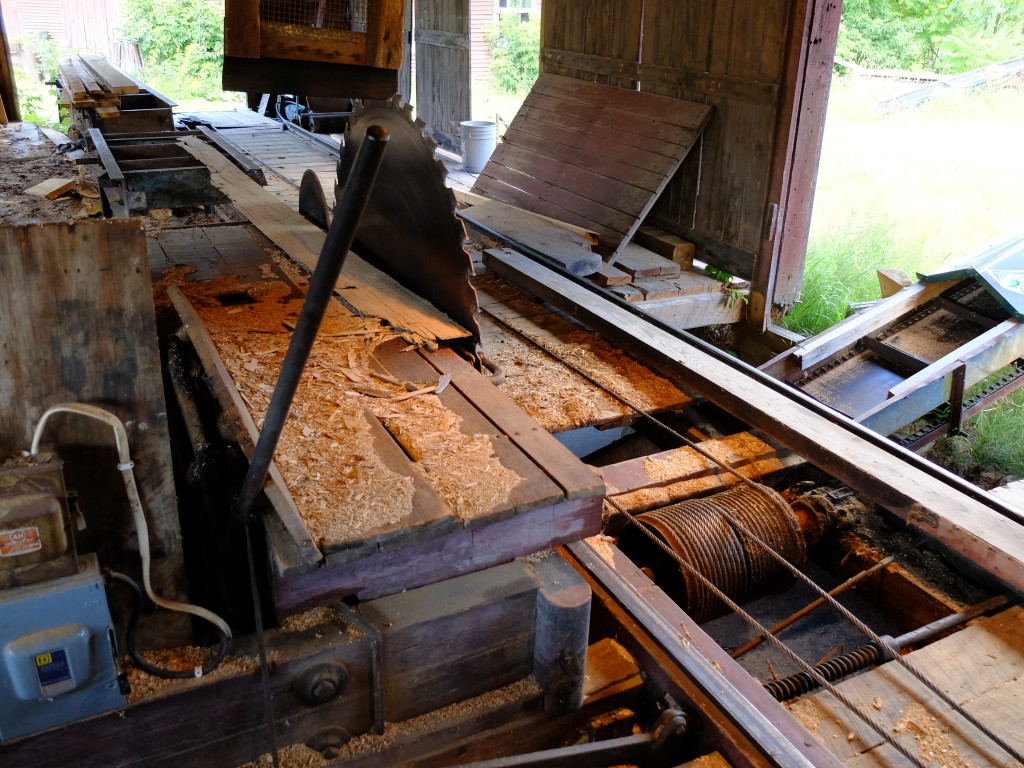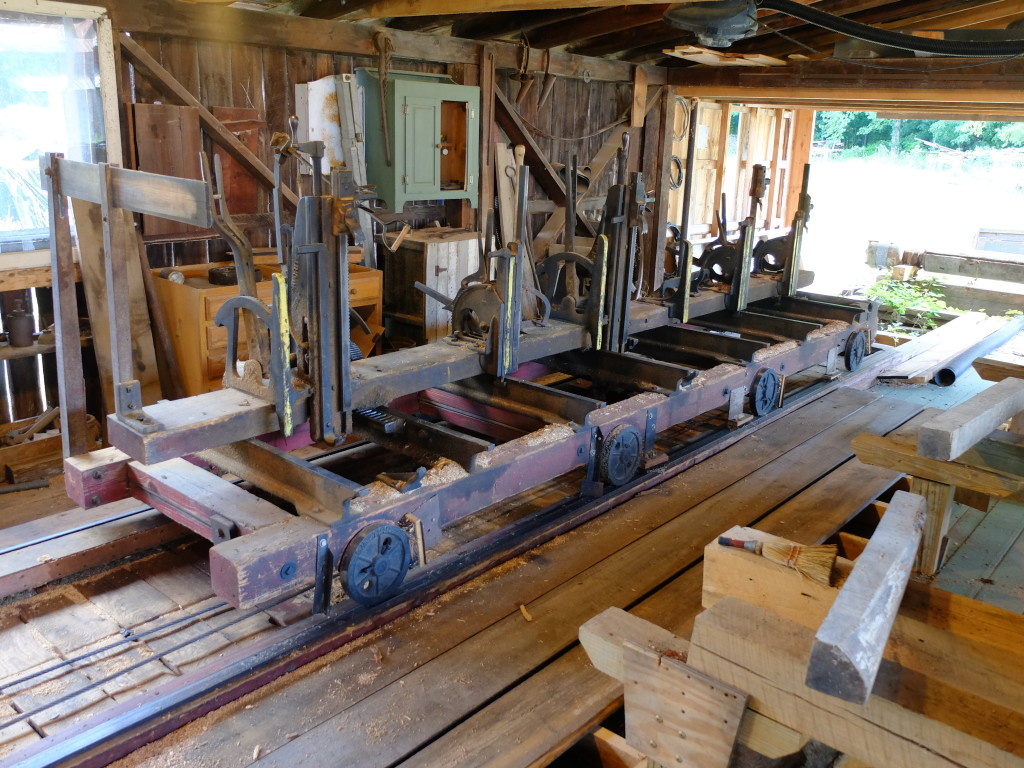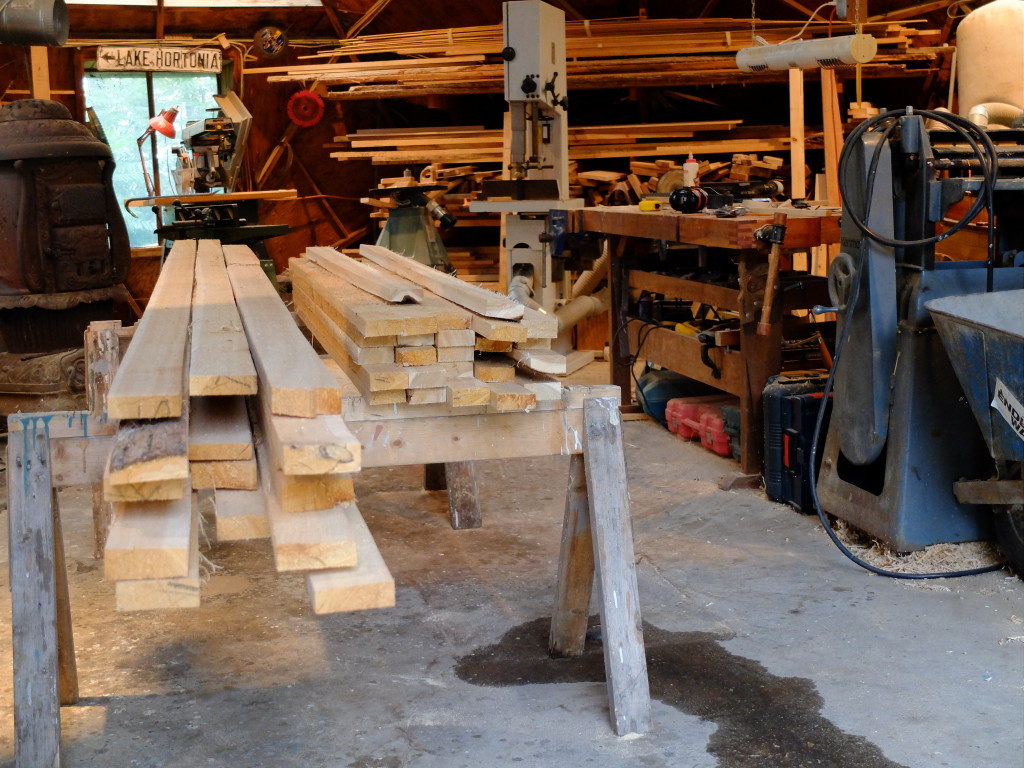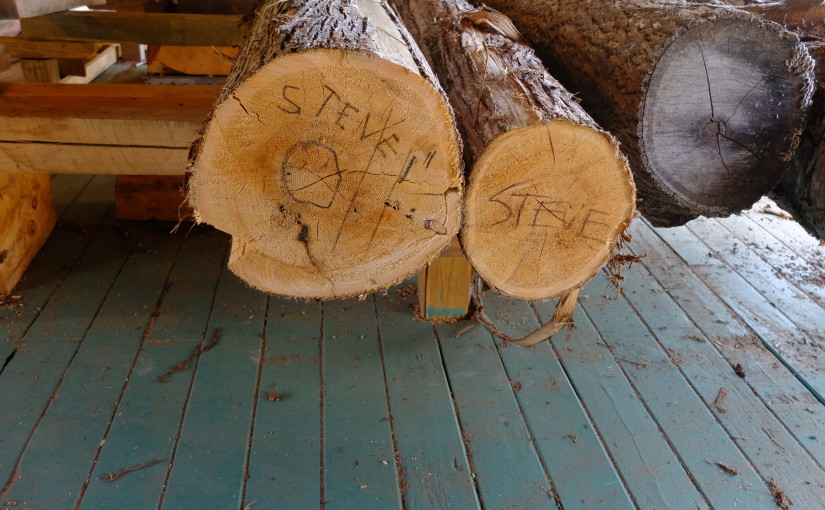For my most recent boats I have used white cedar from Bruce Tweedie in Thorndike Maine. Finding clear white cedar, and asking to have it quarter sawn, is very unlikely. I was lucky on this boat to find a local mill that specializes in white cedar and I was able to select the logs I wanted and have them milled to my dimensions. It is an old circular blade mill. The logs ride on this carriage past the blade. The whole rig is about 70 years old.
The logs ride on this carriage past the blade. The whole rig is about 70 years old.
I picked out two logs, the biggest about 16″ in diameter on the butt end, mostly clear, with no twist. The circular saw cuts a wide kerf, almost 5/16″, and to cut down on waste, I had the logs sawn into 2″+ planks which I took home and resawed on my bandsaw into stock roughly 5/4″ thick. My bandsaw, a MiniMax MM16, uses a 1 1/4″ blade at 1.25-tpi, which produces less than 1/16″ kerf. I resawed right away so the lumber would dry properly. Thicker lumber is harder to dry with a higher likelihood of developing drying problems like case hardening. (In case hardening, the outside of the board dries more quickly than the inside, but can’t contract because the inside has not shrunk. Stresses develop in the lumber that don’t appear until later when the board is cut.) The two logs yielded about 150 board feet of rough lumber, which finally came to about 100 board feet after I cut it to blanks in the dimensions I wanted for ribs and planking. This boat measures 72″ gunwale-to-gunwale on the outside, so the maximum length of the rib stock should be about 6′ 4″; much of the rest of the boat will take ribs around 5′ 6″, and, spaced 3 1/2″ on center. There will be about 65 ribs. To cover the ribs with 3″ planking will take 12 strakes per side, or 24 pieces of 3″ x 12′ planking per side. I now have 16 pieces of 5/4″ x 12′ planking stock that will resaw into 3/16″ thicknesses to yield 48 planks, mostly clear and vertical grain, and 30 pieces of rib stock 2 1/2″ wide that will each give 2 ribs. I would actually prefer slightly off-vertical grain for the ribs, but, especially with white cedar, you use that you can get. The few knots I encounter will be drilled out and plugged with epoxy-glued plugs.
This boat measures 72″ gunwale-to-gunwale on the outside, so the maximum length of the rib stock should be about 6′ 4″; much of the rest of the boat will take ribs around 5′ 6″, and, spaced 3 1/2″ on center. There will be about 65 ribs. To cover the ribs with 3″ planking will take 12 strakes per side, or 24 pieces of 3″ x 12′ planking per side. I now have 16 pieces of 5/4″ x 12′ planking stock that will resaw into 3/16″ thicknesses to yield 48 planks, mostly clear and vertical grain, and 30 pieces of rib stock 2 1/2″ wide that will each give 2 ribs. I would actually prefer slightly off-vertical grain for the ribs, but, especially with white cedar, you use that you can get. The few knots I encounter will be drilled out and plugged with epoxy-glued plugs.
